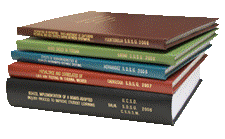Libraries, University of Nebraska-Lincoln

Archival Master’s Theses from the University of Nebraska-Lincoln
Date of this Version
8-1968
Document Type
Thesis
Citation
Thesis (M.S.)—University of Nebraska—Lincoln, 1968. Department of Animal Science.
Abstract
Urea additions to silage have been made for the past 25 years in order to increase the nitrogen level of ensiled materials. Urea has been added to corn silage either at silo filling time or at feeding time.
Because of the economic advantage that urea holds over a natural protein as a source of supplemental nitrogen in ruminant rations, urea has recently assumed a major role in practical ration formulation. As a nitrogen source in high grain rations, urea has been investigated intensively and has been found to be an effective and efficient method to increase the nitrogen level of the ration.
In order to study the effects of urea additions upon fermentation and nutrient loss, appropriate chemical analysis must be made at the time of harvest to determine the characteristics of the material entering the silo. Chemical analyses must also be made as the silage is fed in order to establish the composition of the silage being fed. In order to draw valid conclusions, the weight of the material into storage and out of storage must be determined. These measures along with animal performance give an opportunity to determine the effect of urea additions to silage at ensiling time. Adequate data in the literature are not available to properly estimate the practice.
The specific objectives of the study reported herein were:
-
To determine the influence of urea on chopped whole corn plant fermentation in the silo.
-
To determine nutrient loss in the silo as a result of the ensiling process.
-
To compare the performance of calves fed an urea supplemented corn silage ration versus a ration with urea added at ensiling time in a growth trial.
-
To compare the performance of steers fed an urea supplemental corn ration versus a ration with urea added at ensiling time in a finishing ration containing additional carbohydrate.
Two experiments were conducted to compare the value of urea additions at ensiling time or at feeding time for supplying the supplemental nitrogen in corn silage rations. In a finishing experiment a high grain ration was fed with 12 lb. of corn silage which had been treated with urea either at harvest or at feeding time. In the second experiment two trials were conducted over a two year period in which urea treated corn silage and an untreated corn silage supplemented with either urea or soybean meal were fed to growing calves.
Advisor: Walter R. Woods


Comments
Copyright 1968, the author. Used by permission.